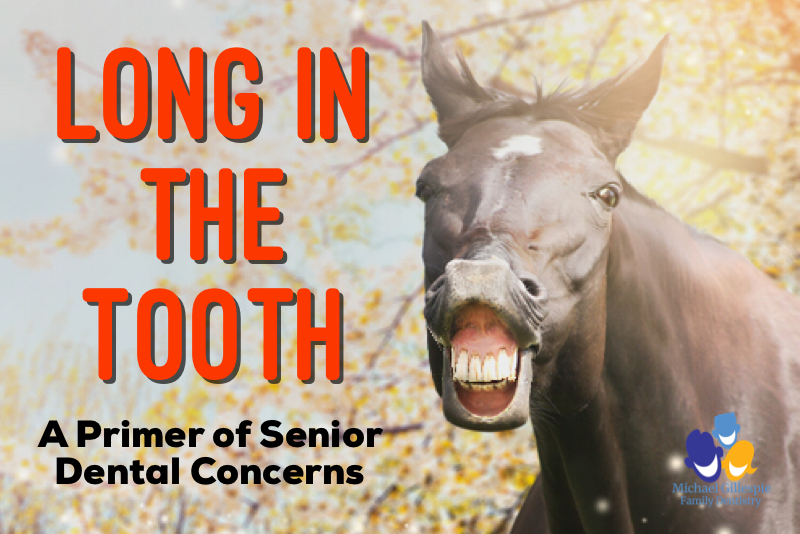A Primer of Senior Dental Concerns

The term “long in the tooth” originates from the practice of judging a horse’s age by examining its teeth. Likewise, human teeth may also exhibit tell-tale signs of aging.
As we mature, many of us experience bone loss around the base of our teeth. The gum tissue recedes along with it, which exposes the root surfaces of our teeth. Since the root is not covered with enamel, it is more susceptible to tooth decay and is marked by a yellower color as well. Following are a few issues associated with bone loss and gum recession.
Root Caries
As mentioned above, root surfaces are at a greater risk of decay since they are not protected by enamel. This can happen under existing fillings and crowns and highlights the need for meticulous cleansing, as well as frequent radiographic exams to address problems while they are small. A fluoride toothpaste is a must for seniors, and many can benefit a daily fluoride gel application as well.
Exposed Crown Margins
As the gums recede, margins of crowns that were previously camouflaged by the gum tissue become visible. This appears as a dark line under the base of a crown and is unsightly to many. Tooth decay may start here and progress to the interior of the tooth. Depending on the location and severity, a cavity may necessitate a filling or replacement of the crown.
Yellow or Dark Teeth
As we age, our teeth, as well as our bones become more mineralized. This leads to a darker, or yellow appearance in the teeth. Coupled with a lifetime of eating and drinking chromogenic substances such as coffee, tea, berries, and so on adds to the discoloration. Tobacco users will experience even more severe discoloration due to tar and nicotine being incorporated into the teeth.
Multi-colored Teeth
Crowns and fillings are matched to the shade of teeth at the time the restorations are placed. When older dental work is adjacent to age-related dark teeth, the smile can take on the appearance of calico corn since the restoration is likely to reflect the lighter shades of youthful teeth. In other words, the teeth changed color but the dental work didn’t.
Worn and Obsolete Dental Work
Teeth are subjected to an excessive amount of wear and tear on a daily basis. Think of the grinding, chewing, and pressure they are subject to over a lifetime. Therefore, teeth chip and break, as do dental repairs. Restorations are constructed of man-made materials and will fail at some point. Man-made materials have a lifespan, and as they break down, they can chip, break, and become discolored.
To discuss solutions for your dental issues, age-related or otherwise, feel free to call us for a dental consultation. All of the above concerns have their related treatments and we have 26 years of experience!

